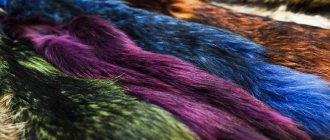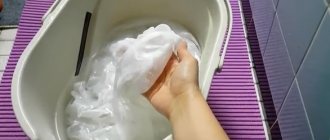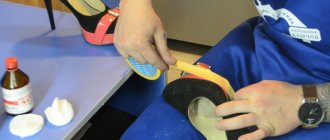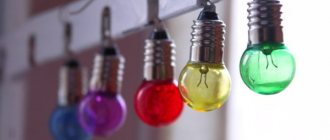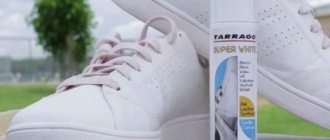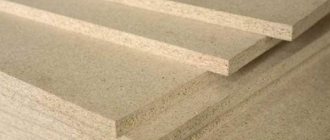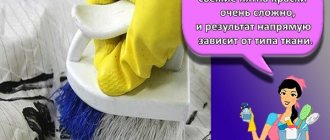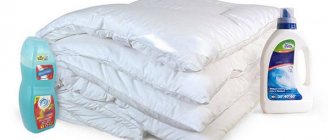«How to dye tulle?“- the answer to this question is of interest to housewives who want to slightly change the interior of their room. This need to change the design sometimes arises if the owners have changed furniture or made renovations in the room. It’s a shame to throw away tulle that doesn’t match the wallpaper or furniture, but there is a way out - changing the color of the curtain.
If you value tulle and you are not going to change it, then you can easily change the color of the product to a more suitable one. This can be done using special industrial dyes or you can prepare them yourself at home.
Today, many cannot imagine life without this very convenient and practical creation of human hands - tulle. Few people know who and when it was invented. Tulle got its name from the French city of the same name. This is a very light, transparent (mesh or patterned) fabric.
Tulle with a smooth structure is made by mixing 2 systems of threads in special mechanical machines. Curtains are made from it, women's clothing and underwear are decorated with it, and all kinds of embroidery are used. Curtain (lace) tulle is produced on curtain machines; it is used for sewing curtains, capes and bedspreads. Tulle curtains are very delicate and require careful care. This product should be washed on a delicate cycle at a low temperature not exceeding 40 °C.
Today, in order to significantly change the design of your home, it is not at all necessary to involve professional designers; it is enough to dream up on your own or turn to the World Wide Web for help. Even if you don’t radically change the design of curtains or curtains, but paint them a different color, the room will look different.
Curtains and curtains are interior items that immediately catch the eye. Properly selected curtains can make a room cozy and harmonious. If the curtains do not harmonize with the design of the room, then it will look ridiculous. Just one coloring of the curtains in the desired tone - and well-chosen accessories can work wonders.
The most common color of tulle is white, it looks very luxurious on the window.
There are 2 main reasons why housewives decide to change the color scheme of curtains or curtains:
- the need to change the interior;
- the desire to refresh the previous color of the curtains or restore lost whiteness.
Special bleaching products will help you cope with the problem of faded color. A curtain cannot become snow-white forever, but for some time it is possible to return it to its former color.
Dyeing tulle at home is quite simple. But, if you do not want to carry out this procedure yourself, you should entrust it to a professional. In this case, you will have to spend additional funds from the family budget.
The housewife who prefers to save money and is capable of painting it herself receives some advantages:
- saving money for the designer’s work, delivery of the product;
- the ability to independently choose the appropriate color depending on personal preferences and the interior of the home.
If there is an urgent need to change the shade of curtain tulle, you must first of all clearly imagine what color you want to get as a result of dyeing.
Causes of yellowing tulle
The main reasons for changes in the color of tulle fabric are:
- influence of dust and grease;
- street soot and gases;
- washing without soaking and removing dust particles;
- use of hot water, more than 40°C, for artificial fabrics;
- tobacco smoke;
- exposure to sunlight on fabric.
To maintain the presentable appearance of tulle for a long time, it is necessary to properly care for it. It is recommended to wash tulle at least once every 3-5 months, depending on how dirty it is. Bleaching methods depend on the material from which they are made and what type of contamination is present on the fabric.
Tulle can be made from various materials:
- artificial - nylon, nylon, polyester;
- natural - these include linen, cotton, silk.
They differ in the type of weaving - mesh, organza, muslin or veil.
- Organza is a popular type of fabric. This fabric is made by twisting fibers from silk, viscose or polyester. The lightweight fabric is distinguished by its quality: it drapes, forming voluminous folds, and holds its given shape, is practically not subject to wear and detains the sun's rays. Tulle made from this type of material is the most popular.
- The grid speaks for itself. The fabric has a mesh structure that allows air and light to pass through. This type of fabric is most susceptible to collecting dust, so it is not suitable for people with allergies.
- A veil is a translucent fabric that allows light and air to pass through. A thin veil is made from silk, cotton and even wool threads. Has the property of repelling dust.
- Kisey is a special type of tulle. Consists of woven threads or strands of silk, synthetics or cotton, fastened together. Beads, glass beads, and seed beads are woven into the threads. This type of tulle does not need frequent washing.
Application of automatic whitening machine
The following tips will help you wash kitchen tulle from greasy and other difficult and old stains, and properly bleach delicate fabrics in the washing machine:
- Cotton tulle can be washed at higher temperatures, and aggressive powders and bleaches can also be used.
- In relation to synthetic fabrics, only gentle measures and mild agents can be used.
- Compliance with certain stages of preparation and bleaching will help return the tulle to its original appearance:
- Shake out the dust from the tulle, it is best to do this outside. Without this, it will be impossible to wash the product; contaminants will penetrate into the fibers of the fabric.
- You should inspect it for the presence of contamination: this could be yellowness, grayness and stains. The type of contamination determines which products are best suited.
- Prepare a soap solution (you can use 1-2 tablespoons of Fairy).
- Rinse the tulle in this solution.
- Afterwards, wash in the washing machine with any oxygen-containing bleach.
- To eliminate unpleasant odors, add conditioner when rinsing.
- If the tulle is not very dirty and just dusty, you can simply shake it out and spin it in the machine at minimum speed and for a minimum time. It is necessary to set the delicate mode.
Additional Information! For transparent synthetic fabrics, it is necessary to use only products suitable for them; when washing, select programs - “delicate”, “wool”, “silk”, “hand”, set the water temperature to no more than 40°C.
- The use of aggressive detergents and bleaches exposes delicate fabrics to rapid wear. High temperature may cause permanent yellowing. For example, organza cannot be ironed. After washing, wet tulle can be immediately hung in its place.
Folk remedies and methods
There are several tips and tricks on how to bleach tulle at home. Using inexpensive but effective folk methods will help restore freshness to fabrics. Before washing the tulle, you need to remove dust from it, then soak and rinse.
Note! Tulle wears out easily, so when washing you do not need to use force by twisting it, you should only squeeze it lightly.
Ammonia
In 7 liters of warm water, dilute ammonia and hydrogen peroxide, 1 and 2 tbsp each. spoon respectively. Place washed tulle into the solution for a short period of time - 20-40 minutes. Afterwards, be sure to rinse in clean cool water and hang to dry.
For this purpose, only coarse table salt is used; iodized salt is not suitable!
- in water with a temperature of no more than 40°C, stirring, dissolve coarse salt in a ratio of 2 tbsp. spoons per 1 liter of water;
- after the salt has completely dissolved, add powder for delicate fabrics (according to the manufacturer’s recommendations);
- load tulle into the prepared saline solution;
- soak for 2 hours, the material must be turned over periodically;
- rinse and wash in washing machine.
Too much yellowed tulle can be soaked in a strong concentration of salt (1 kg per 5-6 liters of water). The water temperature should be no more than 35-36°C. Duration of soaking is 1-1.5 hours. The salt will soften all the dirt and yellowness, so immediately after soaking the water must be poured out and replaced with clean water. Afterwards, you will need to add washing powder to it and wash the tulle by hand.
Soda does a good job of removing gray stains and yellowness. Bleaching with a soda solution must be done between soaking and final washing of the product.
The method is quite simple: for the solution you need to mix 2 tablespoons of soda and 100 grams of washing powder, dissolve them in 10 liters of water. If the tulle is not so dirty, you can simply soak it in a solution of water and soda for a while, then rinse it.
Blue
If the fabric is not white enough, you can try to bleach the tulle using blue: dissolve 1/2 teaspoon of blue in 9-10 liters of warm water until it turns blue. The main thing is that the color becomes uniform. Dip the contaminated tulle into the solution and rinse. If there is no effect, table vinegar can be used along with blueing. Blue can be purchased at hardware stores. It is very often used to bleach white fabrics.
Regular brilliant green
No matter how strange it may be, ordinary brilliant green can return the whiteness to the product. How to Whiten Tulle with Green Diamond:
- Pour salt into a large bowl of water (2 tablespoons per 1 liter).
- Separately, add 10-12 drops of brilliant green into a transparent glass of water and mix.
- Wait 2 minutes and combine with saline solution.
- Rinse the pre-washed tulle in emerald water.
- Then hang to dry.
Salt will make the tulle elastic and will repel dust and dirt, and brilliant green will return the lost whiteness. Curtains bleached in this way can be easily hung in a children's room.
Laundry soap
Important! Laundry soap can only be used for tulle made from natural materials! When using this method on synthetic fabrics, they may lose their original appearance and will be damaged beyond repair.
To prepare the solution, grate 100 grams of 72% laundry soap on a hand grater. Pour 1 liter of water and heat until a liquid soap mass forms. Take the required amount of hot water into a soaking container and dissolve 150 g of any washing powder in it. Add the resulting liquid soap and mix thoroughly. Afterwards, the tulle should be dipped into this solution. It is recommended to soak for about 1-1.5 hours, until the soap solution cools. The product must be turned over periodically. Afterwards, the tulle should be rinsed in warm or cool water. When finished, wash in the washing machine.
What can you use?
“How to dye tulle and what is best to use for this procedure?” − this question arises among many owners of window curtains. Today there are many color options for synthetic fabric dyes.
Anyone, even the most capricious housewife, can choose an individual shade for the curtain that you will not find in anyone else’s house.
The choice of dye is an individual matter. Each woman herself determines which one is better to use: professional or made with her own hands from pharmaceutical and improvised means.
As mentioned earlier, if you want to use factory dye, then the choice of color will be obvious, you just need to purchase the right one.
If you decide to use folk remedies, then you need to know what you need to have on hand to obtain the desired shade.
- Green. To obtain a green color, you can use brilliant green.
- Pink or purple. For these shades you can use potassium permanganate.
- Brown. Tea leaves or coffee grounds will help you get a brown color.
- Blue. To dye tulle blue, bluing is suitable.
- Red. Fukortsin will help repaint the product red.
Dyeing tulle at home is not as difficult as it seems. It is only necessary to strictly follow all points of the instructions when choosing an industrial dye. Before starting work, you should carefully read the instructions for the product.
Industrial dyes
As mentioned in the previous section, you should not experiment with industrial dyes at your own discretion. It is necessary to scrupulously observe proportions and maintain the required time.
The coloring composition is first diluted with water in a small container, then thoroughly stirred until a uniform color is obtained. Then the dye is added to the main portion of water, only after that the tulle is lowered into it.
Manufacturers of industrial dyes advise adding table salt to water to fix the color for a long time. The manufacturer indicates on the packaging how much salt to add.
The advantages of industrial dyes are that they are quite easy to use (compared to folk remedies) and the choice of colors is huge.
The disadvantages include the fact that factory dyes have a strong chemical effect on the product at the time of dyeing, which can have a bad effect on the fabric.
Also, industrial-type dyes have a specific, rather persistent odor, which cannot be gotten rid of immediately.
Folk remedies
Folk remedies for dyeing curtains at home are no less popular than industrial ones.
Products for dyeing tulle at home:
| Desired color | Means | Mode of application |
| Cream, brown | 2 teaspoons of tea leaves are poured into 1 liter of boiling water and the tea is allowed to brew. Then it is filtered and the curtain is dipped into the resulting composition. What color you get depends directly on the time of dyeing. After dyeing, the product must be rinsed. | |
| Pink, lilac | Manganese solution | A small amount of potassium permanganate is diluted with warm water and the product is placed in it. The holding time is determined independently. After dyeing, the tulle is thoroughly rinsed. |
| The method of staining with this preparation is the same as the previous one. | ||
| Onion peels, as well as dandelion, daffodil or calendula flowers | You can achieve a yellow tint using onion peels or the flowers of medicinal plants shown in the table. The proportions of components and the required painting time depend on how bright the color you want to get. | |
| Blackberry fruits | Using blackberries, you can dye the tulle black in the same way as described above. | |
| Water soluble blue | Dilute the blue as indicated in the instructions. Then stir thoroughly until a homogeneous mass is obtained so that there are no lumps left. Warm water is poured into the bath and the product is placed in it. It is necessary to ensure that the curtain is evenly placed in the coloring composition, otherwise it will color unevenly. It is not advisable to paint the product in a basin, since the coloring effect may be different due to the container being too small. To obtain a blue tint, you can keep the tulle in the composition for 30 minutes, and for a darker one - 1.5-2 hours. Then the product must be rinsed and dried in a vertical or horizontal position so that creases do not form on it. Otherwise, the color may vary in these areas. |
With the help of simple steps you can easily transform tulle into one color or another. If the recommendations are properly followed, painted curtains will last a long time and will delight household members with an unrivaled appearance.
You can paint the product not only by hand.
This procedure can be performed in a washing machine by adding the selected and adjusted coloring composition to the drum of the unit.
To keep your curtains looking great for a long time, you can take advice from professionals on caring for tulle products.
Here are some of them:
- When washing, do not use large amounts of powder or liquid detergent. Excessive amounts of product can damage the fabric structure.
- What shade you get after the dyeing procedure depends only on you. The more time the product is in the coloring composition, the more saturated the color will be.
- After the dyeing process in the washing machine is completed, it must be thoroughly cleaned of traces of dye. This will prevent staining on items that will be washed afterwards. You can do this yourself using a damp cloth and detergent or mechanically. To do this, set the automatic machine to the washing mode, adding 1.5 cups of the bleaching component to the drum.
- Good advice for housewives: before the washing stage, treat the product with a fixative so that the color is fixed as long as possible and the curtain does not fade.
- It is recommended to wash tulle by hand rather than by machine. After all, even the most gentle and delicate washing mode can harm a fragile product. Models of modern washing machines are equipped with a special option for more gentle washing, but nevertheless, you should completely trust them with your product with caution.
- Tulle curtains are very capricious and require delicate care. Too high temperatures and hot water are contraindicated for products made from this fabric. The second can give a white product a yellowish tint. Such a curtain will not look so impressive. It is advisable to wash the product in non-hot water.
- Ironing curtains is not recommended.
- Before the product enters the drum of the washing machine, it must be carefully folded or placed in a washing bag. This must be done so as not to damage the fabric.
Now that you know all the intricacies of dyeing tulle at home, you can safely get down to business and change the design of the product without significant financial costs.
If you have a desire to update your interior and want to do this by changing the color of the curtains, then this can be done very easily and economically at home. Before you paint nylon tulle, you need to decide what color you want to get in the end.
To dye this type of fabric, aniline dyes, tea, potassium permanganate, and brilliant green are usually used. Having chosen the color and dye, you also need to prepare washing powder, in this case soap is suitable, a container in which the product will be painted and washed, and two glasses of salt (salt helps to wash the material better and contributes to a brighter color of the product).
Are whiteness and modern bleaches effective?
To achieve crystal whiteness, you can use household chemicals. Important! Do not bleach tulle with chlorine-containing products!
Whiteness contains 95% chlorine. Under its aggressive action, the structure of the material may collapse, the fabric will turn yellow, fade, and will no longer be suitable for use. Therefore, such bleach cannot be used!
Oxygen bleaches. They are produced in the form of powder or liquid gel. The components of such products decompose in water into hydrogen peroxide and soda, and oxygen is also released, which will help in the fight against yellowness, stains and odors.
Benefits of oxygen-containing products:
- they can be used for white and colored tulle, also for synthetics;
- have an antibacterial effect;
- bleach in cold and cool water;
- no need for soaking or boiling;
- with slight contamination of the material, effective with 100% bleaching when washing in an automatic machine;
- do not change the structure of the material;
- facilitate the whitening process.
By following the tips and recommendations on how to remove gray tulle at home, you can return the tulle material to its original whiteness. This will not require large financial expenditures, and the result will be obvious.
White tulle is a classic option for light and airy curtains. But over time, the fabric turns yellow or gray and loses its snow-white appearance. Sometimes even special bleaches cannot restore freshness, whiteness and original color. In this case, painting will come to the rescue.
In addition, you can paint the tulle if it has not yet lost its attractiveness, but you are already tired of the color of the curtain and want to add new colors to the interior of the house. By the way, tulle is used not only for making curtains and curtains.
Light, airy and transparent fabric is used for sewing clothes, including wedding dresses and underwear. Tulle makes luxurious canopies, bedspreads and even bedding sets. In any case, the products can be painted. In this article we will look at how to paint tulle at home.
We dye in the washing machine
As an option, you can consider dyeing in a washing machine. However, it is imperative to follow the rules and follow the instructions if you do not want to ruin the tulle:
- No one has canceled the preparatory stage of the fabric, even if dyeing will take place in a washing machine. So wash the tulle thoroughly before the main action begins.
- Dilute the paint according to the instructions and pour it directly into the drum.
- Place the wet cloth in the drum.
- Select a wash mode and a time of at least 30 minutes.
- Press the start button and wait until the wash finishes.
- Washing a second time, but always adding vinegar and cold water, will help fix the color.
Important! Once the process is complete, the first thing to do is clean out your dye washer to avoid damaging your items the next time you wash them. You can clean it manually, or you can run another wash, but add one and a half cups of bleach.
Can the paints used damage my car?
Surely the question pops up in your head about what will happen if you dye things in a washing machine. Will the equipment deteriorate after this? You can live calmly and not worry. The dyes do not contain any strong chemicals, which makes them absolutely safe.
Painting products
Many people are interested in the question of how to paint tulle. In this case, painting agents are divided into natural and chemical. The latter include special aniline dyes, blue, potassium permanganate and even brilliant green.
Chemical dyes are characterized by ease of use, a wide selection of colors and shades. But such agents act quite aggressively on the fabric. In addition, after painting, the material will retain a sharp, specific odor for a long time.
Natural products have a safe effect on the material, so even thin, openwork and delicate fabrics can be dyed. In addition, they do not leave an unpleasant odor. Despite the small selection of colors, natural paints provide a noble and refined shade. At the same time, it turns out to be more natural than when using chemicals.
In this case, decoctions of herbs, vegetables and fruits, tea and coffee are used. Beetroot juice is very often used, which gives a rich and luxurious shade. If you prefer natural dyes, keep in mind that carrots produce orange, dandelion or calendula produce yellow. Blackberry dyes the fabric black or dark blue, and yarrow or dock green.
Onion peels will give you a shade from yellow to brown, depending on the concentration of the solution and the exposure of the fabric. How to paint a white curtain depends on preferences and capabilities. In any case, the material must first be prepared for painting.
Other dyeing methods
There are quite a lot of them. Moreover, coloring can be done either manually or by machine. Here are some of them:
- Yellow color can be obtained by using all the different yellow flowers as coloring agents. For example, dandelions, daffodils and calendula.
- Carrots and onion peels will help to acquire an orange tint.
- If you want to get a green color, then, in addition to the usual greenery, you can also use the leaves and stems of sorrel, yarrow and spinach.
- Blackberries will give the tulle a black color.
Important! A good option is to apply a fixative to the tissue before starting the procedure. It will help fix the color and preserve it during subsequent washes of the tulle.
Preparatory stage
Before painting, thoroughly tap and shake out the product so that no dust, small specks or dirt remain. Otherwise, the coloring will turn out uneven. Then wash the fabric in warm water and a suitable detergent. For tulle, it is better to choose liquid gel or washing shampoo. In addition, you can prepare a soap solution from water and liquid soap or shavings of laundry or baby soap. How to make homemade laundry detergent, see here.
For natural fabric, choose a temperature of 40 degrees, for synthetics - 30. It is advisable to wash by hand; in the washing machine, set the gentle or gentle mode. During the washing process, do not squeeze or twist the fabric too much. After the procedures, rinse the curtains thoroughly and do not wring out the material, but hang it up to drain. Then the products will not have to be ironed.
Aniline dyes
Aniline paints are the simplest and most comfortable way of painting. They are a colored powder that must be diluted in water in proportions according to the instructions. Before use, be sure to study the recommendations for using paint and the product label, otherwise you may ruin the tulle or get a completely different color. Things are soaked in the resulting solution, then rinsed in clean water and left to dry completely.
You can dye the tulle in the washing machine. This will speed up and simplify the procedure, ensure intensive mixing and uniform coloring. First, also shake out, wash and dry the curtains. Dilute the coloring powder according to the instructions and pour the resulting mixture into the drum of the washing machine. We also put curtains here.
Turn on the washing mode without pre-soaking and without spinning at a temperature of 30-40 minutes. Having repainted the fabric, take out the curtains and run the machine in rinse mode without washing and without clothes. It is recommended to repeat the procedure, otherwise residual dye may remain inside, as a result of which the subsequent batch of light-colored laundry may be stained.
Pay special attention to nylon tulle. This fabric is more difficult to dye than others. In this case, it is recommended to add salt to the coloring solution in the amount of a tablespoon per ten liters of water.
Painting process
Multi-colored tulle
Preparing fabric for dyeing is a prerequisite when choosing any of the dyes. Only by dyeing clean fabric will you get the desired result. It is not necessary for the fabric to dry completely after washing; slightly damp tulle and curtains will absorb coloring pigments faster.
The color intensity of the product depends on the concentration of the dye and time.
Zelenka and potassium permanganate
To paint tulle with brilliant green, a few drops of the product are dripped into a glass and filled with water. Leave for five to ten minutes and stir. Keep in mind that brilliant green does not dissolve immediately! Therefore, you must wait a while and then strain the solution into a container with warm water where you plan to paint.
If you want a light green color, use a pale solution. For more saturated shades, take a bright mixture or dye several times. In any case, brilliant green does not give a completely natural color, unlike natural ingredients. For example, yarrow, sorrel and other greens.
Place the curtains in a solution with brilliant green and leave for a while. To ensure uniform coloring, turn the material periodically. When it reaches the desired color, rinse the tulle in clean water and set to dry.
Painting with potassium permanganate is done in the same way as brilliant green. Dissolve a few drops of the product in a glass, then add warm water and leave for five minutes. Stir and strain the solution into a container of warm water. Soak the tulle in the mixed mixture for 15 minutes.
During the process, turn the material regularly and then rinse in clean, cool water. Painting with potassium permanganate will produce a lilac, lilac or violet color, depending on the concentration of the solution.
Variety of paints for painting
To the question: how to dye tulle at home with your own hands, you can answer this way: choose a dye taking into account the desired result. The easiest way to use factory-made specialized paints is aniline. But if you want to save money, try changing the shade of the curtains using improvised means:
- brilliant green - if emerald green color is needed;
- potassium permanganate or beets - if you need to paint the tulle pink;
- tea and coffee (color ranges from beige to brown);
- blues - if you need a blue or light blue curtain.
During the painting process, you must follow the instructions, otherwise the result will be unpredictable. If you use factory-made dyes, follow the manufacturer's recommendations, which he indicates on the packaging.
Zelenka
The dyeing principle is standard, regardless of the dye - a concentrated solution is prepared and the curtain is dipped into it (soaking time depends on the desired color intensity). But each of the listed dyeing methods has its own nuances. Let's start with how to paint tulle with brilliant green:
- Add a teaspoon of brilliant green solution to a glass of water. After stirring, the liquid is kept for 10-15 minutes and then poured into a bowl of warm water.
- Tulle is lowered into the liquid. The main thing is to ensure that the curtain gets wet evenly and completely.
- Periodically, the tulle is lifted to evaluate the color. To paint a curtain with green paint at home in a rich shade, it will take 30-40 minutes. If the color suits you, the fabric can be rinsed in cold water.
Potassium permangantsovka
Staining with potassium permanganate is not much different from the previous technique:
- A small amount (at the tip of a knife) of manganese crystals is dissolved in a glass of water. It is advisable to take hot water, otherwise the dissolution process will take a long time.
- The solution is poured into a large container of water.
- The curtain is soaked for 15-40 minutes, depending on the desired result.
- After painting, the tulle is washed in several waters and dried.
With further washing, the color will gradually fade. To update it, just repeat the described procedure.
Aniline dyes
Aniline dyes are synthetic organic substances belonging to the group of aromatic compounds. They are actively used for dyeing fabrics in various shades. Aniline flows perfectly, thanks to which you can simply and quickly create abstract designs on fabric, obtaining unusual combinations and shade transitions. The paint is very easy to use and safe for humans. If you are going to try this coloring method, follow the instructions from the manufacturer. There are several options for dyeing curtains with aniline substances:
- the dye is diluted with water to the desired shade, then tulle is placed there for 10-15 minutes;
- the diluted dye is poured directly onto the fabric evenly over the entire surface or randomly (depending on the desired pattern).
Nylon curtains are more difficult to dye than others. To change the color of nylon, salt is added to the dye solution in the amount of 1 tablespoon per 10 liters of water.
Beetroot
Beetroot beautifully colors fabrics, but quickly fades after washing. In order for the dye to be permanent, the beets must be prepared:
- grate and add alcohol (0.5 l per 1 kg);
- Boil until completely softened with the lid closed;
- strain and cool.
You can safely dip the tulle into the resulting solution. The color will come out a rich pink and will be very long lasting once dry. However, you should not wash such a curtain with curtains of other shades. Beets can fade and stain other things.
Tea or coffee
If you want to get beige or brownish tulle, use natural coffee or black tea. To prepare the solution, two tablespoons of the bulk ingredient are enough. Tea (coffee) should be boiled in a liter of water until a strong brew is obtained. The curtain is dipped into the hot solution for 30-50 minutes. After painting, the tulle is dried and ironed with a hot iron. The color will last a long time.
Folk remedies
Loose leaf tea or coffee will help you get a creamy, beige or brown color. Pour boiling water over one or two tablespoons of coffee or tea and brew for ten minutes. Then strain and pour into a container with water at a temperature of about 30 degrees. Mix the solution and put the tulle there. Soak the curtain and turn it regularly. When you get the color you want, rinse in clean, cool water.
To dye beetroot tulle, wash, peel and cut the vegetable. Pour vodka over the pieces. To obtain a rich shade, use a liter of vodka per kilogram of beets. To obtain a delicate color, 0.5 liters of vodka is enough. Boil the beets until tender and strain the solution.
Pour the strained mixture into a bowl of warm water and mix. We lay the curtains and soak them, turning them over during the process. When you get the desired shade, rinse the tulle. To dye with other folk dyes, make a decoction of the required concentration and also soak the tulle.
Choosing a dye
After the preparatory stage, you need to decide what color you want to get the textile product. A large selection of aniline dyes sold in retail chains will help you paint in the desired color. Choose a product that matches the material and intended color.
Zelenka
Painting the fabric with green paint should be done by those housewives who want to see window decorations in a greenish tint. Dissolve a little green pharmaceutical liquid in warm water and stir the contents of the container evenly. Then place a damp cloth there and leave for a short period of time. You can dye fabric with brilliant green at home evenly, without streaks and stains, if you periodically turn the tulle (curtains, nylon mesh) in a basin.
You can paint curtains without much effort and material costs by using potassium permanganate. In this case, you will get a lilac shade. The entire painting process will take very little time, but the result will definitely please you. The principle of coloring is the same as when using brilliant green.
Tea and coffee
To give window curtains a beige or cream color, you can use tea leaves or ground coffee. Dying fabric with tea at home is as easy as using other natural dyes. Two teaspoons of tea leaves or coffee is enough to prepare a coloring solution. They need to be dipped in 1 liter of boiling water, wait until completely dissolved and strain. Then put the material to be painted into this “decoction”.
If the tulle is very large, then increase the proportions of coffee (tea) and water.
Beet
This product has good coloring properties and can dye curtains a different color.
In order to dye tulle at home, you need to cut the beets and fill them with alcohol or vodka (one bottle per kilogram of beets). Cook the beets until they are completely softened with the lid closed, strain the juice and use for coloring.
A concentrated decoction of onion peels can also change the color of window curtains.
Hooray! Now we have large and beautiful curtains from the ceiling and almost to the floor. We've been dreaming about them for a couple of years now. If your apartment has 3-meter-high ceilings, you understand what it’s like to find a suitable curtain...
We encountered the following problems:
- most ready-made curtains and fabrics for sewing them are sold in lengths of no more than 2.8 m, and more often 2.5 m;
- fabrics 2.8-3 m long are much more expensive than shorter ones;
- often the choice of long (about 3 m) fabrics is very limited: sometimes the color is wrong, sometimes the pattern is completely strange;
- ready-made beautiful 3-meter curtains are very expensive.
Taking into account all these factors, we came to the conclusion that we need to find high-quality natural fabric with a width of at least 2 meters. Cut it into 2 curtains 3 m long and dye it using special fabric dyes. The good news is that the modern choice of fabric paints is very large. In the old fashioned way, we thought of buying ordinary aniline dyes, which are sold in small packs in the markets. But the Internet offered us a choice of several paints from foreign manufacturers. We settled on the Dylon company.
When we began to delve deeper into this topic, we found out - lo and behold! – the fabric can be dyed in the washing machine! And a wonderful palette of these colors was discovered. Nice complex colors, just our taste. For the room we had to choose a red-burgundy color to match and. I found this color, it’s called red rosewood :)
The fabric we bought for sewing curtains is called satin. This is a natural cotton material that should be dyed beautifully. It’s only a pity that we didn’t buy it with a small reserve... We were 15 cm short of the floor on each curtain (after painting, the fabric shrunk a little, and a little more length went into the seams). But this is also good - the bottom edge won’t get too dusty.
Sima is considering future curtains :)
How to sew curtains with your own hands?
To start, we marked the floor so we could cut the fabric along the marks. We bought 12 meters at once, so that we would have enough for kitchen curtains too! 
Marking the floor to cut the fabric
Rolled out the roll. A line was drawn with a pencil under the even trim, and the curtain was cut along it.
Unwound roll
Cutting fabric into curtains
Future curtain
In order for the seams to be even, they should first be ironed.
Smoothing the seams
We wrapped the fabric twice on each side.
Rolling up the fabric
How to dye a large piece of fabric with your own hands?
We sent the curtains to the wash. This is what the paint manufacturer advises. We obediently follow the recommendations.
Wash the fabric before painting
Pour paint and “Extra” salt into the machine. We paint no more than one curtain! The machine should be half empty, then all the fabric will be dyed evenly.
Pour salt and dye into the drum
When the “dry mixture” is already in the drum, turn on the machine for a couple of minutes. Then we stop the wash and add the fabric. This fraud should be carried out to better dissolve the dye in water. After painting, it is recommended to run another wash cycle, but this time with washing powder. This is necessary in order to wash off excess paint from the product.
Washing fabric in paint
After the curtains were dry, we ironed them. To hang the curtains on the curtain rod, we decided to use alligator clips. This will make our work easier: no need to sew on loops or loop tape.
“Crocodiles” for curtains
We marked the distance between the clamps on a piece of old tape measure. All the “crocodiles” clung to him.
Clamp distance
Then the long-awaited moment came: Kostya put the curtains on the curtain rod.
Kostya is hanging new curtains
Hooray! Now we have beautiful curtains in the color of the painting hanging on the wall, and they also create such darkness during the day that you can easily watch movies from the projector on the screen. Now all that remains is to buy a projector :)
It happened more than once that guests who did not yet know about our DIY fabric dyeing asked: “Where did you find curtains of this color?” To be honest, this question makes me very happy. This means that the efforts were not in vain :)
We wish you a warm orange-burgundy autumn!
Are you tired of the shade of your curtains and tulle, a white T-shirt has stopped making you happy because its shade has become boring, but you don’t want to buy a new one? There is a way out - painting things at home. In this article, we will tell you how to dye fabric with brilliant green and other natural dyes, as well as how to properly care for the dyed item.
How to paint tulle blue
Blue is a mixture of starch and dye, which is produced in the form of a liquid solution or powder. It gives the products freshness and the right shade. For high-quality and reliable painting, it is important to choose the right blue. In this case, choose only a water-soluble composition to obtain uniform coloring!
When painting with blue, keep in mind that it is only suitable for natural fabrics. In addition, this is not a permanent dye that will gradually wash out. When choosing, remember that a quality product will not stain the bathtub, hands, or various surfaces. If it leaves marks, don't use bluing. Otherwise, it will leave stains on the curtains.
To dye with blue, wash, rinse and dry the item. Dilute the powder or liquid according to the instructions to a homogeneous mixture of uniform color without clumps of coloring matter. Pour the solution into a container, place, distribute and arrange the tulle so that the water completely covers the fabric.
It is important that there are no kinks or folds, so it is better to paint the item in the bath. Here you can lay out the fabric completely. For a light blue tint, leave the tulle for a few minutes, for a deep blue color - for an hour. To preserve the color and physical properties of tulle longer, add a little table salt when rinsing. In addition, it is important to ensure proper care of the fabric. How to properly wash and iron tulle, see the link https://vsepodomu.ru/glazhka/kak-pogladit-tyul-posle-stirki/.
Openwork curtains not only add individuality and comfort to the home, but also show the taste of the housewife. Sometimes women refuse such beauty, replacing tulle with blinds. They explain this by their busyness, since bleaching tulle at home is troublesome. But in reality, this is not a problem at all.
Tulle is sewn from various fabrics, but always very soft and airy. Silk, viscose, polyester, nylon, cotton and even wool are suitable for such delicate work. Wool is woven into an openwork, thin veil.
Tulle made of nylon and polyester is considered the most durable. As for care, artificial fabrics are the best to wash, but this must be done very carefully - if the temperature is not maintained, the fabric turns yellow. Only delicate mode or hand washing will help.
How to transform your interior by painting tulle
Tulle and curtains are the accessories that are the first to be noticed by people entering a room. Fabric curtains can either decorate or hopelessly ruin the interior.
Painting curtains a different color quickly and without much effort is one of the acceptable options for transforming the interior. By changing the color scheme of the clothes for the windows and choosing cute little things to match the color, you can get a new solution for your home or work environment.
Painting curtains with your own hands can help if there is no time and money to repair and update the interior, but the “soul asks” for something new. The painting process is economical in all respects:
- no significant funds are required to purchase dyes;
- it is not necessary to waste time waiting and listening to the designer’s recommendations;
- there is no need to spend a long time shopping in search of new curtains;
- Re-staining is possible.
Do I need to rub, twist, iron?
Before making the tulle snow-white, you need to prepare for this process according to all the rules:
- shake out the cloth to remove dust;
- stop using chlorine-containing products;
- temperature for washing tulle - no higher than 40°C (hot water will ruin the fabric, and cold water will not cope with dirt);
- the best detergent for washing is liquid;
- if you use powder, it must first be dissolved;
- the fabric does not need to be rubbed;
- so that the curtains are without folds, they are not twisted;
- do not dry the tulle in the sun - you will get a yellow color;
- To iron the tulle after washing, you don’t need to take an iron: you just need to hang wet curtains on the curtain rod.
Selection of household chemicals: 3 options
In hardware stores you can buy products created specifically for fabrics that require careful handling. They are safe and do their job quite well. They are good because they contain bleach and even “starch.”
Three types of “washing agents” allow you to restore the whiteness of tulle.
- The simplest powder. Both “automatic” and “manual” will do. They can be used if you need to bleach nylon tulle, or when at home there is a struggle for the freshness of organza or cotton curtains.
- Baby powder or gel. They contain special bleaching elements that protect the fabric from thread disintegration.
- Shampoo for fabrics. Prevents deformation of delicate products, cleans efficiently, but carefully.
Tips for caring for the product
In order for painted tulle to please its owners for a long time with its updated look, it is worth following the recommendations for proper care of it:
- do not add too much powder during washing - this harms the structure of the fabric and washes out the paint faster;
- When washing items for the first time, add color fixative to the water (sold in hardware stores);
- Wash thin fabric by hand or on the most delicate cycle, otherwise it may be damaged, or place it in a special bag when washing;
- Do not wash tulle in hot water - use only warm or even cold water;
- Do not iron the tulle with a hot iron, as it may turn yellow.
Using inexpensive dyes, you can completely transform the look of curtains, giving them a new color, brightness and richness. The process will not require much time, but will allow you to fully express your taste and imagination.
Washing methods
The curtains can be washed either in a machine or by hand. Remember that jewelry in the form of muslin, ribbons, and fringe do not like automatic washing and can be hopelessly damaged. But dense fabrics, curtains made of polyester and viscose feel good in the drum. Hand washing is more gentle, but old tulle curtains cannot be tidied up this way.
Manual
It would seem that this is the most basic way: pour water, throw in a handful of powder and, with physical effort, wash the item. But not everything is so simple, since you need to wash tulle wisely. To achieve the result, the following actions are required.
- Soak. Make a saline solution, add any detergent and soak the tulle in the liquid. If it is not too dirty, then two to three hours will be enough, otherwise you can leave it overnight. Before washing, you need to rinse the curtains in several waters.
- Wash. Wash in warm water using a suitable detergent. If you take powder, first dissolve it in water. But to brighten the color, you can pour in a little vinegar. Lather the water well, then add the tulle there. Foam is the product that perfectly washes delicate fabrics. Remember the curtains in the water. No need to squeeze or rub too hard - this is unnecessary.
- Rinse . Pour clean water. Add some blue. Dip the curtains and rinse them gently. Thanks to the blue, you can wash the tulle from grayness - the curtains will acquire a barely noticeable shimmer and freshness, as if you had just bought them.
Machine
Activator-type machines are not suitable for such things, so it is best to wash tulle in an automatic washing machine. To prevent the curtains from being damaged, you need to use a special bag, which is what it’s called: for washing delicate items. If you don't have one, fold the tulle into a clean white pillowcase. What's next? Follow the following five-step procedure.
- Place the tulle in the drum of the machine.
- Pour gentle detergent and tulle bleach into the special compartments (it does not contain chlorine).
- Select the “delicate”, “gentle”, “neat” mode (each machine has something similar). The cycle should be the smallest that the programs offer.
- Turn on the “extra rinse” option.
- Turn off spin or select the lowest speed available.
If you do everything correctly, then at the end of the wash you will get clean and fresh curtains without making any special efforts - the machine will do everything for you.
How to bleach tulle: 6 options
As long as the curtains are new and fresh, they look quite attractive. But time and repeated washing cause the tulle to turn yellow or gray. And kitchen curtains generally become covered with greasy stains. It is in such cases that you need to not just wash the item, but bleach the tulle curtains. There are several proven methods for this.
Yellowness is easily washed off in a saline solution. The stronger the solution, the more likely it is that the curtains will take on a snow-white appearance.
- Take 100 g of salt and mix with powder 1:1.
- Dissolve the mixture in a liter of warm water. Need more water? Then increase the amount of salt and powder proportionally.
- Immerse the tulle in the liquid.
- Leave for a while (the longer the better, but at least three hours).
- Rinse, wash.
Blue
Despite the fact that bluing is becoming increasingly difficult to find today, it is one of the most effective methods for bleaching tulle. Wash the curtains first, and then do the blue rinse.
- Take 0.5 teaspoon of blue for 10 liters of water.
- Stir the product well so that there are no lumps, otherwise they will leave unsightly marks on the fabric.
- Dip the tulle into the solution several times.
- Rinse.
- Don't squeeze, let it drain.
Zelenka
This product will help put the tulle in order, but you need to act very carefully here, since undissolved brilliant green will simply ruin the thing.
- Add ten drops of brilliant green to a glass of water and stir.
- Wait until completely dissolved.
- If precipitation occurs, it is necessary to filter.
- Pour the solution into a ten-liter basin filled with water.
- Send the washed tulle next and leave for five minutes.
- Rinse.
- Don't squeeze, let it drain.
Peroxide
A good remedy if you have cotton curtains; this method will not work for other fabrics.
- Prepare a bucket of hot water
- Pour in one tablespoon of ammonia and three tablespoons of hydrogen peroxide, stir.
- Place the washed tulle in the resulting solution for 30 minutes.
- Rinse.
- Don't squeeze, let it drain.
Potassium permangantsovka
Potassium permanganate also received good reviews as a curtain bleach.
- Rub a bar of laundry soap.
- Dissolve a few grains of potassium permanganate in a glass of water.
- Mix soap and potassium permanganate with water prepared in a basin for soaking the fabric.
- Place the tulle in the resulting composition for 30 minutes.
- Rinse.
- Wash it.
- Don't squeeze, let it drain.
Digestion
Boiling will help remove kitchen tulle from greasy stains and heavy dirt. The method is old, but effective. However, it is only suitable for curtains woven from thick threads.
- Pour water into an iron basin and add your favorite laundry detergent.
- Place on the fire and place the tulle there.
- Wait until the water boils, and then, stirring, boil the curtains for 40-60 minutes.
- Rinse.
- Don't squeeze, let it drain.
How can you dye fabric?
If you do not take into account the composition of the material, you can paint the product as follows:
- Pour dry powder dye into a glass of water, dissolve it and strain through cheesecloth.
- Add the dye to a metal bowl with the prepared clothing and pour in enough hot water to completely cover the item.
- Place the container with the product and dye on the stove and bring the liquid to a boil. Clothes must be constantly turned over so that the material is dyed evenly. After 20 minutes from the start of boiling, salt is added to the water (from 2 to 5 tablespoons). This is necessary so that the color becomes more saturated.
This is a home interpretation of how fabrics are dyed in production. You need to evaluate the resulting color of the product not immediately as soon as it has been painted, but after it has dried. The result largely depends on how correctly the raw materials were prepared.
Important! The container in which the factory dye was used can no longer be used for cooking.
Dyeing depends on the type of fabric. So, for wool, as a rule, acid dyes are used, and in addition to salt, vinegar is also added to the water during the dyeing process. It is also used when rinsing dyed silk, which makes it possible to better fix the color on the material. Before you dye synthetic fabric, you need to weigh the pros and cons in advance. It is very difficult to paint such material. Sometimes the paint doesn’t stick at all, but simply drips off the clothes like cellophane. If you still need to paint, then it is better to choose a suitable disperse paint in advance.
Dyeing fabric with natural dyes is considered safer and more natural.
Vegetable, fruit and berry juices are used to obtain it. To ensure a lasting result, when preparing the dye, natural raw materials are mixed with either salt or vinegar. In general, the coloring result depends on how intense the color of the vegetable or fruit infusion was, which indicates a sufficient amount of coloring pigment in it.
Starch: the final stage
The last step left is to starch the tulle at home. This will give the sheer curtains shape and extra shine.
- Dissolve 250 g of dry starch in a bowl of water (about 10 liters), mix well until smooth.
- Soak the washed curtains in the solution for five hours.
- Take it out of the water.
- Don't squeeze, let it drain.
There are many ways to quickly bleach tulle at home. If you are not satisfied with one method, try another. Do not forget and do not be lazy to wash the tulle, as dust collects in it, causing respiratory diseases. The health of all family members depends on the cleanliness of your apartment.



